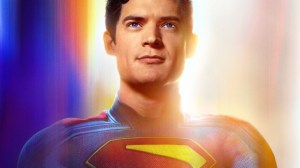
When Disney announced its plans to expand the Star Wars universe with a series of sequels to the original films, many fans felt a tinge of sadness when they learned the stories told in the “Expanded Universe” comics, novels and video games were no longer part of the official Star Wars canon.For many Star Wars fans, the Expanded Universe was the main way to remain connected with the Star Wars universe and learn about the earliest days of the Jedi as well as the continuing adventures of Luke Skywalker and his friends.
Videos by ComicBook.com
While the Expanded Universe is no longer “officially” part of Star Wars canon, there’s still plenty of great (and bizarrely fun) stories to enjoy.Here’s five of our favorite Star Wars Expanded Universe stories:
Splinter of the Mind’s Eye

The first ever Star Wars tie-in novel, Splinter of the Mind’s Eye was George Lucas’s backup plan in case A New Hope flopped in theaters. If he couldn’t get a full-blown sequel greenlit, Lucas planned on developing Splinter of the Mind’s Eye as a low-budget movie alternative. As such, writer Alan Dean Foster kept Splinter of the Mind’s Eye as simple as possible. The book took place on a fog-filled planet (so Lucas wouldn’t have to use full sets), with no scenes set in space. Splinter of the Mind’s Eye also didn’t feature Han Solo at all, as Harrison Ford hadn’t signed on for a potential sequel at the time.
The book itself was a bit of a mess. Crashing on a backwaters swamp planet, Luke and Leia overhear a legend about a mysterious crystal that grants its users additional control of the Force. They discover the crystal’s location thanks to some friendly locals and confront Darth Vader at the temple where the crystal is hidden. Thanks to the crystal’s powers, Luke defeats Vader by severing his arm and eventually escapes the planet with Leia, but not before engaging in some friendly mud wrestling with his twin sister. While many Star Wars fans will be left scratching their head after reading Splinter of the Mind’s Eye, the book holds an important place in Star Wars history.
The Thrawn Trilogy

While not the first Star Wars novels, the Thrawn trilogy were the first books to be set in the years after Return of the Jedi. Written by popular science fiction writer Timothy Zahn, the Thrawn trilogy pit Luke, Leia and the rest of the former Rebellion leaders against a cunning Empire general guided by a mad Jedi master. Whereas the Empire traditionally relied on brute force and military superiority, Thrawn was a master tactician with limited resources who relied on surprise and imbalance for his plans to succeed.
The Thrawn trilogy introduced a host of new concepts to the Star Wars universe, many of which made their way into the official canon. Coruscant, the capital planet of the New Republic, made its first appearance in the series, as did Han and Leia’s Force-sensitive children and Luke’s plans to resurrect the Jedi Order. The books also introduced a host of new characters like Mara Jade, an ex-Empire assassin and Luke’s future wife, who would go on to appear in dozens of future novels.
Dark Empire

Dark Empire, a multi-part comic series released by Dark Horse Comics in the early 1990s, contained several of the Expanded Universe’s most shocking events. While disrupting a mutiny of Imperial sympathizers, Luke Skywalker discovered the Empire’s latest superweapons: a fleet of World Devastators capable of converting entire planets into raw materials used to build more weapons and ships for the Empire. At the heart of this latest Imperial rebellion was the reborn Emperor Palpatine, now living in a younger clone body. Swayed by his mastery of the force (and secretly hoping to infiltrate the Empire from the inside) Luke shockingly agreed to become the Emperor’s new apprentice. However, Luke’s flirtation with the Dark Side eventually consumes him, forcing Leia to go on her own desperate mission to turn him back to the Light Side. Interestingly, when approving the Dark Empire series, George Lucas suggested several elements (like clones and the Emperor’s pursuit of immortality) that he would later incorporate into his prequel trilogies.
Young Jedi Knights

The Young Jedi Knights series, written by Kevin J. Anderson and Rebecca Moesta, followed Jacen and Jaina Solo as they trained at Luke’s Jedi Academy alongside Tenel Ka, a princess from the Force-sensitive world of Dathomir, and Lowbacca, a Force-sensitive Wookie and nephew of Chewbacca. While the Young Jedi Knights books won’t win awards for their deep storytelling, the popular series of novels did provide many young Star Wars fans (like myself) with an avenue into the deeper corners of the Star Wars universe. The series acted as a sort of “Expanded Universe” gateway drug that introduced young adult readers to the wider world of Star Wars, while keeping readers invested in the main characters (several of whom would go on to have major roles in later Expanded Universe books).
The Han Solo Trilogy

Part of Han Solo’s endearing charm to Star Wars fans is the long list of bounty hunters, thieves, smugglers and other criminals looking to settle the score for some botched job back in the past. The Han Solo Trilogy, set ten years before the Battle of Yavin, explained much of the smuggler’s backhistory and fleshed out his complicated relationships with characters like Boba Fett, Chewbacca and Lando Calrissian. Much like in The Force Awakens, Solo’s begrudging tendency to do “the right thing” often landed him trouble throughout the books. After sabotaging a spice facility to save the woman he loved, Solo puts an unescapable target on his back, leading to him taking on increasingly dangerous assignments while looking for protection from those out to kill him. The trilogy ends with Solo’s disastrous smuggling trip for Jabba the Hutt, which leads him to a dusty cantina in Tatooine looking for any job that will earn him some much needed money.









